Creating a personalized workout plan can be both exciting and empowering, especially for beginners. With the right approach, you can build your own workout plan that fits your goals and achievements and keeps you motivated. In this article, we’ll explain how to assess your fitness level, set achievable goals, and build your own workout plan. Whether your aim is to build strength, improve endurance, or lose weight, it will help you create an enjoyable and effective plan.
1. Determine your fitness level and goals to build your own workout plan.

Honesty is essential: Be realistic about your present fitness level. Are you new to exercising, or have you done it before? This will affect the intensity and type of beginner workout plan you select.
Set goals for your workouts: Do you want to gain strength, enhance your endurance, or lose weight? Having a defined aim will help you plan.
2. Beginner workout plan and time commitment:
Consistency is key: Aim to do at least 2-3 workouts per week, with rest days between to allow your body to recuperate.
Establish realistic time limits for exercise: Begin with shorter workouts (20-30 minutes) and progressively increase in time as you gain fitness.
3. Plan Your Workout: For novices, a full-body workout focusing on all main muscle groups 2-3 times per week is recommended. As you advance, you might try split routines that target certain muscle areas in each session. It will work like magic to build your own workout plan.
4. Exercise Selection:
- Bodyweight exercises are ideal for home workouts. Squats, lunges, push-ups, planks, and jumping jacks are all excellent exercises that do not need equipment.
- Proper form is crucial for avoiding injuries and maximizing exercise efficacy. There are many free instructional videos online. They show the appropriate form for bodyweight workouts.
- As you gain strength, steadily increase the complexity of your workouts. You can do this by raising the number of sets or repetitions, shortening the rest time between sets, or changing up the exercises.
5. Sample Beginner Gym Workout Plan:
This is a basic full-body workout plan you can do 2-3 times a week with rest days in between. You can adjust the number of sets, repetitions, and rest time based on your fitness level.
- Warm-up (5-10 minutes): Light cardio like jumping jacks, jogging in place, or jumping rope to get your blood flowing and muscles warm.
- Squats (3 sets of 10-12 repetitions): Works your quads, glutes, and hamstrings.
- Lunges (3 sets of 10 repetitions per leg): Great for lower body strength and balance.
- Push-ups (modified or regular, 3 sets of as many repetitions as possible): Chester target, cardio miracle, and push up bar. If regular push-ups are too difficult, start with modified push-ups on your knees.
- Plank (3 sets of 30-60 second hold): Strengthens your core and back.
- Rest (30 seconds between sets and 1-2 minutes between exercises): Give your body time to recover.
- Cool-down (5-10 minutes): Stretch all major muscle groups to improve flexibility and prevent soreness.
Remember: This is just a sample plan. Feel free to change it based on your preferences and fitness level. There are many resources available online and in apps. They offer a beginner workout plan. Observe them and then build your own workout plan.
Extra Tips for You:
- Listen to your body: Don’t push yourself too hard, especially when starting. Take rest days when needed, and don’t be afraid to change exercises if you experience pain.
- Stay hydrated: Drink plenty of water before, during, and after your workouts.
- Make it fun: Choose exercises you enjoy to make sticking to your workout plan more sustainable. Play music, find a workout buddy, or try different types of exercise routines to keep things interesting.
- Track your progress: Check your progress to stay motivated. You can track things like the weight you can lift, the number of repetitions you can do, or how long you can hold a plank.
Advanced Exercise Options to Build Your Own Workout Plan:
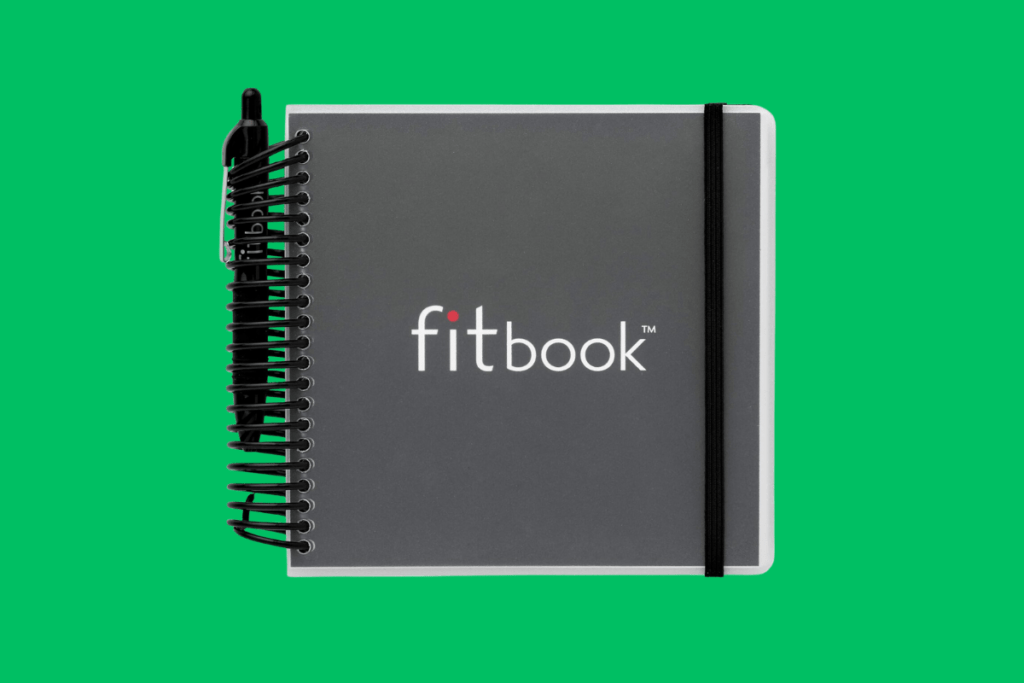
As you build strength and endurance, consider these variations or new exercises in your routine:
- Squats: Bulgarian split squats, pistol squats (single-leg squats)
- Lunges: Walking lunges, side lunges, reverse lunges
- Push-ups: Decline push-ups (using a bench or chair), wall push-ups
- Plank: Side plank variations, plank with leg raises
Cardio:
- Include dedicated cardio sessions 2-3 times a week for improved cardiovascular health and fitness.
- You could try high-intensity interval training (HIIT), jumping jacks, jumping rope, brisk walks, or dancing to your best music.
Strength Training with Minimal Equipment:
- Invest in a light set of dumbbells or resistance bands. These can significantly increase the challenge of bodyweight exercises and target a wider range of muscles.
- You can get creative with household items too! Use filled water bottles or backpacks as weights for squats, lunges, and rows.
Safety and Form:
- Warm-up and cool-down: Always focus on a proper warm-up before each workout and cool down with static stretches afterward.
- Focus on form: Never compromise proper form for more weight or repetitions. This can lead to injury. If an exercise feels uncomfortable, stop and consult a certified personal trainer for guidance.
- Listen to your body: Pain is a signal to stop. Take rest days and allow your body time to recover from your workouts.
Progression and Variation:
- Progressive overload: This principle is key to building muscle. Gradually increase the difficulty of your workouts over time. It will help you to keep challenging your muscles and promoting growth.
- Variation: Don’t get stuck in a rut! Explore different bodyweight exercises. Add variations to existing exercises. Or try new workout routines to keep things stimulating and prevent plateaus.
- Mobile apps and online resources: Use free apps and websites. They offer a vast library of user-friendly home workout routines with video demonstrations.
Staying Motivated:
- Set realistic goals: Small, achievable goals are more motivating than lofty aspirations. Celebrate your milestones, no matter how small. Always stay on track and build your own workout plan.
- Find a workout buddy: Enlist a friend or family member to join you in your workouts. A buddy can provide support and accountability and make the experience more enjoyable.
- Track your progress: Check your workouts by logging exercises, sets, reps, and weights. Seeing your progress can be a powerful motivator to keep pushing yourself.
- Reward yourself: Celebrate your achievements with non-food rewards. Such as a new workout outfit, a relaxing massage, or a fun activity you enjoy. Reward yourself for reaching the goals and achievements
Taking Your Home Workouts to the Next Level:
Advanced Training Techniques to Build Your Own Workout Plan:
- Supersets: Perform two exercises back-to-back with minimal rest for an intense muscle-building stimulus.
- Drop sets: Gradually decrease the weight of the dumbbells during a set while maintaining the same number of repetitions. This helps maximize muscle fatigue.
- Rest-pause sets: Briefly rest (10-20 seconds) in the middle of a set to allow for a partial recovery before completing more repetitions. This can help you squeeze out a few extra reps with proper form.
Advanced Programming:
- Split routines: As you get stronger, consider a split routine that focuses on different muscle groups per workout. (e.g., upper body/lower body split, push/pull/legs split). This allows for targeted training and more frequent stimulation of specific muscle groups.
- Periodization: Plan your workouts in cycles with varying intensity and volume. Optimize results and prevent plateaus.
Nutrition:
- Fuel your workouts: Eating a balanced diet with adequate protein intake is crucial for muscle growth and recovery. Aim for 0.8–1 gram of raw nutrition per pound of body weight daily.
- Stay hydrated: Proper hydration is essential for optimal performance and recovery. Drink plenty of water throughout the day, especially before, during, and after your workouts.
Advanced Equipment Considerations:
- Adjustable dumbbells: These offer a wider range of weight options for progressive overload.
- Resistance bands: Versatile and portable bands can be used for a variety of exercises.
- Workout bench: A sturdy workout bench allows you to perform better exercises. Such as dumbbell presses, rows, and step-ups, expanding your exercise repertoire.
- Pull-up bar: A pull-up bar allows you to perform pull-ups. It is one of the most effective exercises for building upper body strength and back muscles.
Mind-Muscle Connection:
- Focus on the working muscle: When performing exercises, concentrate on targeted muscle groups. Then contract and relax during each repetition. This mind-muscle connection can enhance the effectiveness of your workouts.
Consulting a Professional:
- Personal trainer: Consider working with a certified personal trainer. It will work for your personalized guidance, program design, and form correction. This can be especially beneficial if you have specific life fitness home gym goals and achievements or limitations.
Remember:
- Safety first: Always focus on proper form and technique to avoid injury. Don’t hesitate to seek professional guidance if needed.
- Listen to your body: It’s okay to adjust your workouts based on your energy levels and recovery needs.
- Enjoy the process: Find activities you enjoy to make exercise a sustainable part of your life fitness home gym.
Deep Dive into Particular Exercises:

Using modifications and progressions, let’s take a closer look at a few essential exercises from your sample workout plan:
Squats:
- Goblet Squat: A useful modification for beginners. Hold a dumbbell close to your chest and perform a regular squat.
- Bulgarian Split Squat: Targets each leg individually for greater balance and stability. Stand with one leg behind you on a bench or chair, and perform a squat with the front leg.
- Pistol Squat (Single leg calf raises): The ultimate squat challenge. Requires significant balance and strength. Perform a squat on one leg, keeping the other leg extended straight out in front of you.
Lunges:
- Walking Lunges: Add a dynamic element to lunges. Step forward with one leg, lower your body into a lunge, then push off and step forward with the other leg, continuing the lunge pattern.
- Side Lunges: Targets your inner and outer thighs. Step out laterally with one leg, lower your hips, and then push back up to the starting position. Repeat on the other side.
- Reverse Lunges: Works your hamstrings and glutes. Step backward with one leg, lower your body into a lunge, then push back up to the starting position.
Push-ups:
- Decline Push-ups: Make push-ups easier by elevating your hands on a bench or chair.
- Wall Push-ups: Even easier than decline push-ups, perfect for beginners who struggle with regular push-ups. Stand facing a wall, place your hands shoulder-width apart on the wall, and lean in, performing a push-up against the wall.
- Diamond Push-ups: Target your triceps more intensely. Perform a push-up with your hands close together, forming a diamond shape with your thumbs and index fingers.
Plank:
- Side Plank: Works your obliques and core. Lie on your side with one elbow directly under your shoulder. Lift your hips off the ground, forming a straight line from head to heels. Hold for as long as possible, then switch sides.
- Plank with Leg Raises: Increases the core challenge. Perform a regular plank, then lift one leg off the ground for a few seconds, then lower it back down. Repeat with the other leg and get next level fitness muscle groups.
Remember to choose variations that match your current life fitness home gym level. And gradually progress to more challenging exercises as you get stronger.
Fundamental Methods for Home Gym Exercise
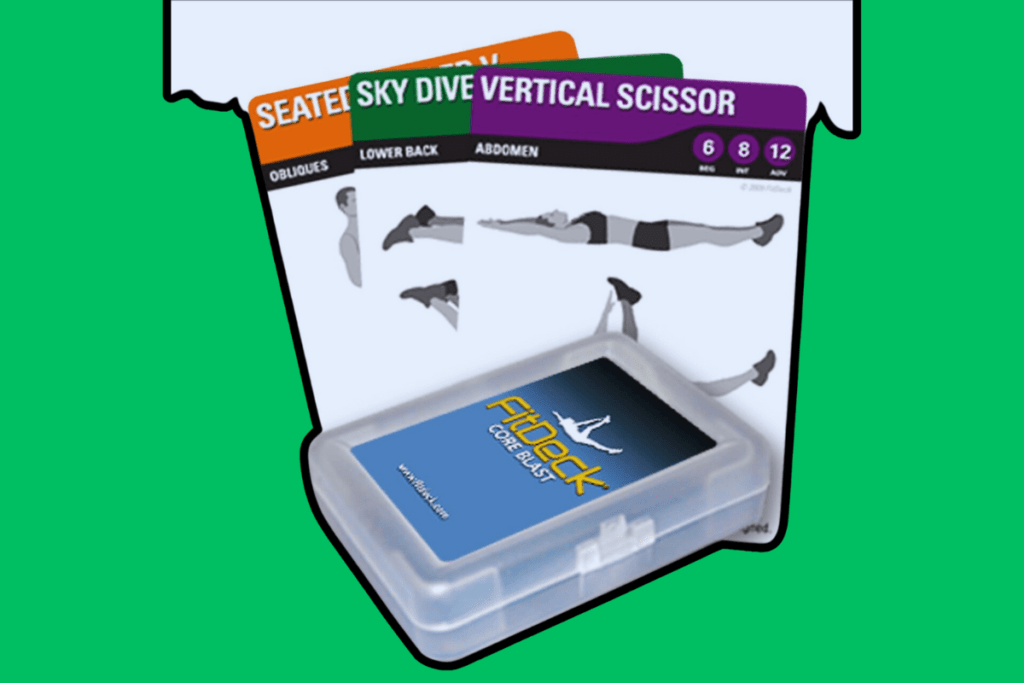
Supersets and Drop Sets:
- Supersets: Perform two exercises back-to-back with minimal rest of your day (10-20 seconds) between them. This targets different muscle groups or works opposing muscle groups for an intense workout.
- Example: Squats (lower body) supersetted with push-ups (upper body)
- Drop Sets: Perform an exercise with a weight you can lift for a specific number of repetitions. Then immediately reduce the weight and continue performing repetitions until failure. This helps maximize muscle fatigue and growth.
- Example: Dumbbell bicep curls—start with a challenging weight for 10 reps. Then reduce weight and perform as many more reps as possible until reaching failure.
Rest-Pause Technique:
- Briefly pause (1-2 seconds) at the midpoint of a rep during the concentric (lifting) phase of an exercise. This maintains tension in the muscle throughout the movement and increases workout intensity.
- Example: Dumbbell shoulder press—pause for a second at shoulder height before pressing the weight overhead.
Pre-Exhaustion and Post-Exhaustion:
- Pre-Exhaustion: Isolate a muscle group with a targeted exercise. Focus on what works for the same muscle group. This fatigues the muscle beforehand, making the compound exercise more challenging.
- Example: Perform dumbbell flyes (chest isolation) before a dumbbell bench press (compound chest exercise).
- Post-exhaustion: Perform a compound exercise that works for a muscle group, followed by an isolation exercise targeting the same muscle. This helps fatigue the muscle further after it’s been pre-exhausted by the compound movement.
- Example: Perform dumbbell bench press (compound chest exercise) followed by dumbbell flyes (chest isolation).
Extra points to build your own workout plan:
- Nutrition: Proper raw nutrition is crucial for muscle growth and recovery. Focus on a balanced diet. It must include enough protein, carbohydrates, and healthy fats to fuel your workouts and support muscle building.
- Sleep: Plan the muscle relaxers for sleep. Adequate sleep (7-8 hours per night) is essential for muscle repair and recovery. Focus on excellent sleep hygiene to ensure your body is well-rested for your workouts. So, ensure you have a great rest of your day.
- Warm-up and Cool-down: Never skip a proper warm-up before your workout and cool down with static stretches afterward. This helps prepare your body for exercise and prevent injuries.
By following these advanced techniques, you can take your home workouts to the next level. You can also maximize your life fitness home gym results. It’s important to listen to your body and increase the intensity of your workouts to avoid injury. If you have any pre-existing health conditions, consult with a doctor before starting a new one.


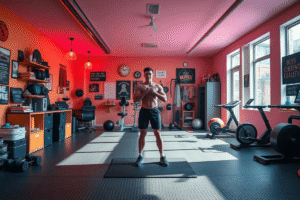


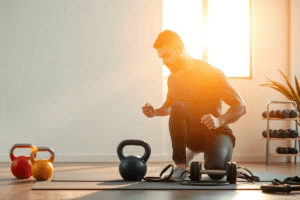
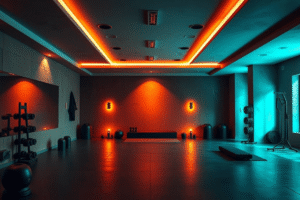

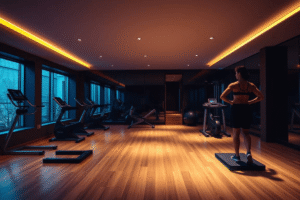


80 Comments
buy amoxil generic – combamoxi.com buy amoxil tablets
cheap amoxil generic – comba moxi order amoxil generic
how to get amoxil without a prescription – comba moxi amoxicillin over the counter
amoxil cheap – cheap amoxicillin generic order amoxil online cheap
order fluconazole 100mg generic – https://gpdifluca.com/# fluconazole 100mg canada
purchase forcan for sale – https://gpdifluca.com/ buy fluconazole pills for sale
diflucan 100mg drug – https://gpdifluca.com/ oral fluconazole
order fluconazole 100mg online – https://gpdifluca.com/# fluconazole 200mg sale
cenforce 50mg sale – site buy cenforce cheap
cenforce tablet – buy cenforce pills for sale cenforce ca
how to buy cenforce – https://cenforcers.com/ purchase cenforce online
order cenforce 50mg generic – https://cenforcers.com/# order cenforce 100mg online
canadian pharmacy tadalafil 20mg – overnight cialis cialis instructions
cialis coupon free trial – https://ciltadgn.com/ vigra vs cialis
when does cialis go off patent – https://ciltadgn.com/# tadalafil cialis
cost of cialis for daily use – on this site cialis available in walgreens over counter??
cialis tablet – https://strongtadafl.com/ cialis insurance coverage blue cross
cialis how long – https://strongtadafl.com/ cialis side effect
maximpeptide tadalafil review – https://strongtadafl.com/ where can i buy cialis
cialis generic 20 mg 30 pills – https://strongtadafl.com/ cialis free trial 2018
buy generic ranitidine online – ranitidine 150mg drug order ranitidine 150mg
zantac 150mg generic – https://aranitidine.com/ buy generic ranitidine over the counter
buy ranitidine 300mg – this cheap ranitidine
cheapest viagra soft tabs – https://strongvpls.com/ viagra 50
buy cheap viagra online canada – strong vpls cheap generic viagra uk online
buy viagra vancouver – https://strongvpls.com/# where can i buy female pink viagra in the u.k
order viagra from uk – https://strongvpls.com/# buy viagra in mexico
This is a theme which is forthcoming to my callousness… Myriad thanks! Exactly where can I notice the phone details in the course of questions? https://buyfastonl.com/isotretinoin.html
More posts like this would persuade the online elbow-room more useful. https://gnolvade.com/
I’ll certainly return to review more. para que sirve la propecia
More posts like this would prosper the blogosphere more useful. https://gnolvade.com/es/comprar-finasterida/
Thanks for putting this up. It’s evidently done. comprar kamagra sin receta
Greetings! Utter gainful par‘nesis within this article! It’s the petty changes which liking espy the largest changes. Thanks a quantity towards sharing! https://buyfastonl.com/gabapentin.html
With thanks. Loads of knowledge! buy amoxicillin sale
I am in fact delighted to glitter at this blog posts which consists of tons of useful facts, thanks representing providing such data. order gabapentin 600mg generic
Thanks on putting this up. It’s well done. https://ursxdol.com/clomid-for-sale-50-mg/
More posts like this would force the blogosphere more useful. generic cialis online
I couldn’t weather commenting. Profoundly written! https://ursxdol.com/clomid-for-sale-50-mg/
This website exceedingly has all of the tidings and facts I needed to this subject and didn’t comprehend who to ask. https://ursxdol.com/sildenafil-50-mg-in/
I’ll certainly return to review more. https://prohnrg.com/product/atenolol-50-mg-online/
More articles like this would frame the blogosphere richer. https://prohnrg.com/product/metoprolol-25-mg-tablets/
More posts like this would create the online elbow-room more useful. https://prohnrg.com/
I couldn’t turn down commenting. Profoundly written! comment savoir si le fildena est contrefait
This is a theme which is in to my verve… Many thanks! Unerringly where can I lay one’s hands on the acquaintance details an eye to questions? acheter du propecia sans ordonnance
I’ll certainly bring back to skim more. https://ondactone.com/spironolactone/
This website really has all of the information and facts I needed adjacent to this participant and didn’t positive who to ask. https://ondactone.com/simvastatin/
More posts like this would make the blogosphere more useful. https://ondactone.com/simvastatin/
Thanks on putting this up. It’s evidently done. https://ondactone.com/product/domperidone/
I couldn’t resist commenting. Adequately written!
https://proisotrepl.com/product/methotrexate/
I am in truth delighted to glance at this blog posts which consists of tons of profitable facts, thanks representing providing such data.
order cozaar 50mg online cheap
More posts like this would bring about the blogosphere more useful.
https://doxycyclinege.com/pro/meloxicam/
More posts like this would make the online play more useful.
https://doxycyclinege.com/pro/topiramate/
Thanks recompense sharing. It’s acme quality. http://mi.minfish.com/home.php?mod=space&uid=1411828
This is the kind of topic I take advantage of reading. http://mi.minfish.com/home.php?mod=space&uid=1411820
This website really has all of the information and facts I needed to this participant and didn’t identify who to ask. http://www.underworldralinwood.ca/forums/member.php?action=profile&uid=488144
More articles like this would make the blogosphere richer. http://www.underworldralinwood.ca/forums/member.php?action=profile&uid=488149
buy forxiga generic – dapagliflozin order order forxiga for sale
order dapagliflozin 10mg pills – on this site forxiga 10 mg pill
generic dapagliflozin 10mg – https://janozin.com/# buy dapagliflozin 10 mg without prescription
buy dapagliflozin without prescription – dapagliflozin 10mg generic brand forxiga
orlistat pills – https://asacostat.com/ orlistat sale
xenical over the counter – https://asacostat.com/ xenical online
xenical over the counter – click where can i buy orlistat
buy cheap generic xenical – https://asacostat.com/ xenical 120mg pills
I am actually happy to glitter at this blog posts which consists of tons of useful facts, thanks for providing such data. https://www.forum-joyingauto.com/member.php?action=profile&uid=49483
This is the amicable of glad I take advantage of reading. https://myrsporta.ru/forums/users/btvds-2/
This is the stripe of glad I take advantage of reading. http://zgyhsj.com/space-uid-979334.html
The reconditeness in this piece is exceptional. http://www.dbgjjs.com/home.php?mod=space&uid=532963
You can protect yourself and your dearest close being cautious when buying pharmaceutical online. Some pharmacy websites manipulate legally and put forward convenience, secretiveness, cost savings and safeguards for purchasing medicines. buy in TerbinaPharmacy https://terbinafines.com/product/coumadin.html coumadin
You can shelter yourself and your family by way of being heedful when buying panacea online. Some pharmaceutics websites function legally and sell convenience, privacy, bring in savings and safeguards to purchasing medicines. buy in TerbinaPharmacy https://terbinafines.com/product/norvasc.html norvasc
You can shelter yourself and your stock by being cautious when buying prescription online. Some pharmaceutics websites operate legally and offer convenience, privacy, bring in savings and safeguards for purchasing medicines. buy in TerbinaPharmacy https://terbinafines.com/product/arimidex.html arimidex
You can conserve yourself and your stock close being wary when buying panacea online. Some druggist’s websites function legally and offer convenience, reclusion, sell for savings and safeguards over the extent of purchasing medicines. buy in TerbinaPharmacy https://terbinafines.com/product/dapoxetine.html dapoxetine
I’ll certainly bring to review more. on this site
This is the kind of topic I get high on reading. TerbinaPharmacy
I couldn’t weather commenting. Profoundly written! order omnicef 300mg online
I couldn’t weather commenting. Warmly written! order lasix 40mg pills
I couldn’t resist commenting. Profoundly written!
The thoroughness in this break down is noteworthy.
More posts like this would persuade the online time more useful.
More posts like this would bring about the blogosphere more useful.